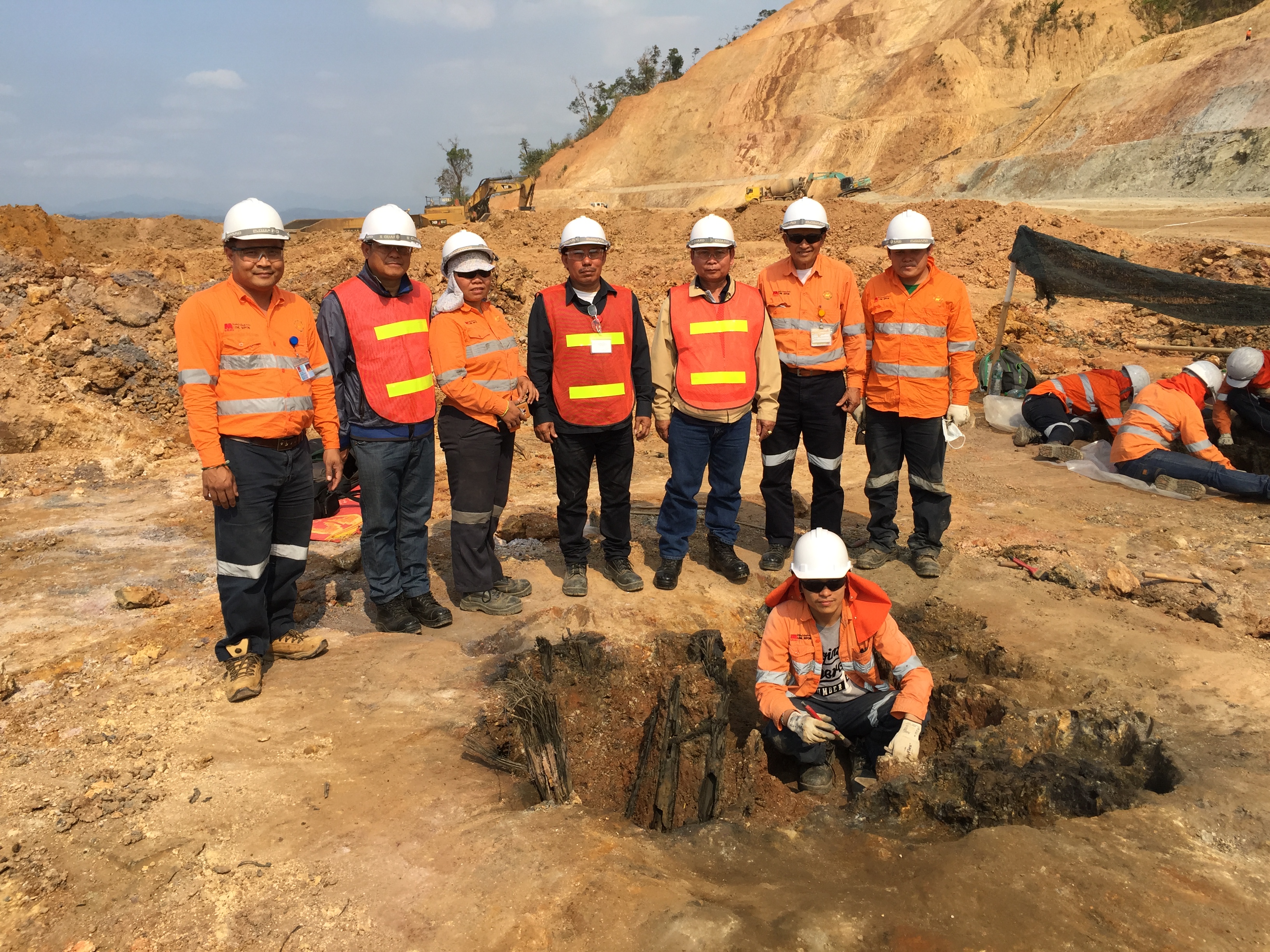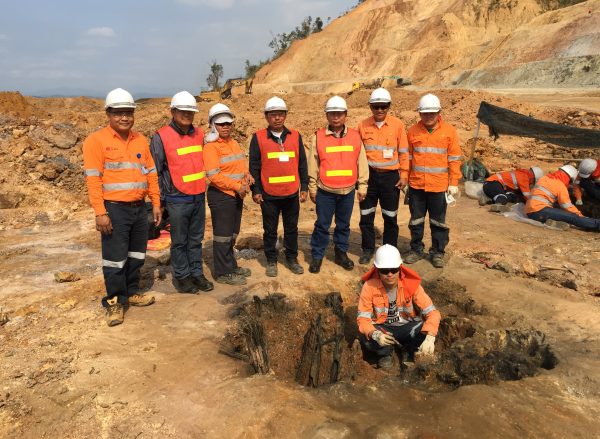Since 2008, Sepon has been supporting 3,000 years of Lao history and heritage through our partnership with the Department of Heritage of the Lao Ministry of Information, Culture and Tourism, the National University of Laos and James Cook University of Australia.
MMG has supported this team to make remarkable discoveries of artefacts and heritage sites in and around the Sepon mine and district. A recent finding dated over 3,000 years ago has shown us how mining would have been practiced in this area many years ago.
In March 2018, our team of archaeologist discovered evidence of more than 100 ancient mining shafts. The vertical rounded shape shafts are evidence of the preferred mining techniques of the time. The wooden reinforcing walls were designed to prevent soil erosion onto the shaft. It is also suspected that the work would have required at least three people ensure a safe work environment.
It is clear, that while mining techniques have progressed through time; safety remains a priority – then and now. The techniques and practices uncovered show us that safety was at the forefront for these prehistoric miners.
Other recent findings include tools used in early mining that have been carbon dated to approximately 3,000 years ago. This means the Vilabouly district is now considered one of the first mining and metallurgy areas in Southeast Asia. We believe ancient mining commenced around the Sepon mine about 1,300 years ago (700 AD). These dates have been confirmed from the examination of bamboo matting found in the ancient mine-shaft support structures preserved in the compacted wet clay just below the surface (10 to 40 meters deep).
“Excavations at Sepon have uncovered a rich history of mining and settlement dating back thousands of years, pointing to how communities in Laos refined and exchanged minerals and metals for thousands of years,” said Mr Saman Aneka, LXML Manager Stakeholder Relations.
“These discoveries highlight the importance of antic mining in civilizations of this region, including how safety progressed through time.”
During the excavation process the team has also found other mining related instruments including mining equipment such as wooden ladders, pulleys, mallets, painted bamboo baskets, and rope made from lianas. It is amazing that all were remarkably well preserved due to rare conditions in the clayed sediments in the deep section of the soil.
Many of the recently discovered items have been put on display in the Vilabouly Cultural Hall. Other important heritage findings include a large “Dong Son” bronze era drum is currently on display at the National Museum in Vientiane.
For more information on Sepon’s commitment to protecting its rich cultural history can be found here.
Image: Archaeological research team in Sepon.





